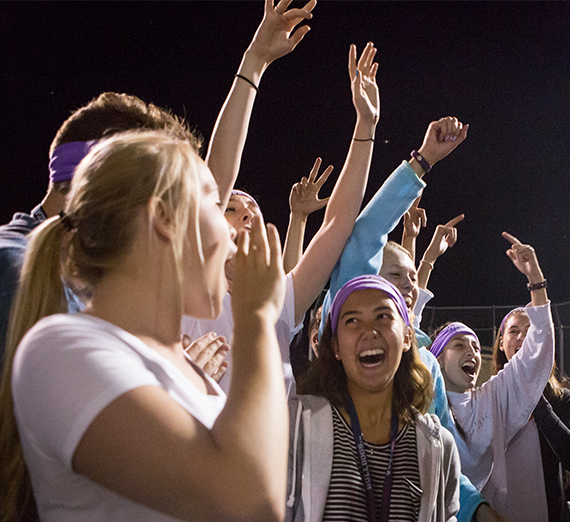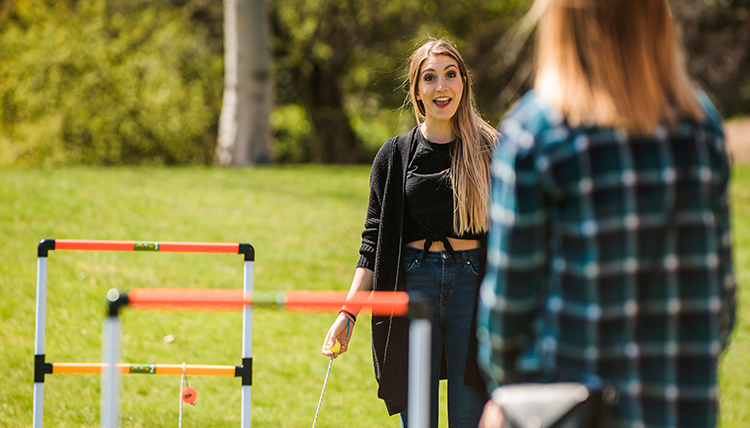Student Development Data Sheds Light on First-Year Involvement

During the 2018-19 academic year, Student Development staff Kelly Alvarado-Young and Joey Sammut compiled data to understand better how first-year students are getting involved outside of the classroom.
Students who interact with their faculty, staff and classmates more frequently, are more likely to stay at their university, graduate on-time and develop meaningful, positive experiences on-campus, Sammut explains.
Alvarado-Young is the director of First Year Experience Programs, and Sammut is the associate director of Student Involvement and Leadership. Together, they collected data from five areas – Housing & Residence Life, Student Involvement & Leadership, the Center for Community Engagement, the Office of Health Promotion and the Center for Cura Personalis – to analyze first-year participation during the Fall 2018 semester. The freshmen and transfer students received an involvement score according to the number of Student Development events they attended – events hosted by SpikeNites, GSBA or a residence hall, for example – and the number of clubs they joined on Zagtivities.
This data yielded an average involvement score of 4.94, suggesting that first-years are involved in healthy ways during their first semesters. Nearly 93% connected at least once with staff or other students outside of the classroom. Sammut refers to these moments of connection as “touchpoints.”
Sammut categorized the data by gender and residence hall style. He found that female involvement was higher than male, and students in corridor-style residence halls were more likely to be involved than students in suite-style halls.
While working on his doctorate of educational leadership at GU last fall, Sammut conducted similar research to explore a link between SpikeNites and movie attendance. He then considered the possibility of expanding this involvement research to create a more accurate picture of Gonzaga’s student community.
Sammut explains, “[W]e talk about how first-year students don't really get involved, and they wait until sophomore year. We talk about how maybe there's a senior year involvement burnout, that everyone kind of peaks at junior year and that's kind of it. I'm not looking necessarily to dispel those narratives, but I'm looking to either back up those narratives with data that proves them, or create new narratives based on what the data is saying.”
With this and future research, Sammut also hopes to evaluate other forms of activity, like work study, intramurals and even basketball game attendance. The ultimate goal is targeted outreach that garners deeper campus connections for all students.
“[T]hose touchpoints are really critical at helping students to feel welcome at the university…We want to make sure that every student feels like they've had meaningful interaction with a faculty or staff member outside of the classroom,” Sammut says. “It expands the idea of what involvement really is.”

